Ukraine Says Russia Used Iranian Suicide Drones To Hit Small Town
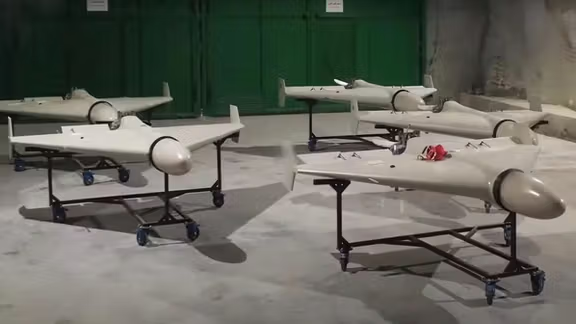
Ukrainian officials said Thursday that three Iranian-made drones were used by Russia to attack the small town of Makariv overnight targeting critical infrastructure.

Ukrainian officials said Thursday that three Iranian-made drones were used by Russia to attack the small town of Makariv overnight targeting critical infrastructure.
"There was an overnight drone bombardment by invaders on the Makariv community," Andriy Nebytov, head of the Kyiv region police said on the Telegram messaging app.
"According to preliminary information, there were no casualties." Russia used more than 20 Iranian drones in its large-scale bombardment of infrastructure and cities on October 10, according to Ukraine.
According to the United States, Iran has supplied Shahed 136 suicide drones to Russia and Ukraine has reported swarms of these UAVs launched against civilian targets. The drones have a low speed of 120-150km per hour and many have been shot down by Ukrainian air defenses and warplanes.
Kyrylo Tymoshenko, the deputy head of Volodymyr Zelenskiy's presidential office, said earlier that the attack took place by "kamikaze drones on critical infrastructure facilities", without providing further detail.
Nebytov and the region's governor, Oleksiy Kuleba, said that rescuers were working at the site.
Makariv, a town which had a population of about 10,000 before Russia's invasion in Ukraine in February, is about 55 km (34 miles) west of the capital, Kyiv.
Iran denies supplying the drones to Russia, while the Kremlin has not commented.

Russia has ordered 2,400 Iranian-made Shahed drones from the Islamic Republic, President of Ukraine Volodymyr Zelensky said Tuesday.
Speaking via video link at the G7 summit, Zelensky appealed to the leaders of the G7 countries with a request to provide air defense and missile defense systems of medium and long range, and added that such systems will create a layered defense system.
"An air shield for Ukraine. This is part of the security guarantees that are an element of our formula for peace. When Ukraine receives a sufficient number of modern and effective air defense systems, the key element of Russian terror – missile strikes – will stop working," he said.
He thanked those countries that have already provided air defense system, “which makes it possible to neutralize some of the Russian missiles and drones. But Russia has ordered 2,400 Shaheds in Iran alone, according to our intelligence."
Addressing the leaders of Western powers each by name Zelensky said, “We are very much looking forward to the delivery of SAMP-T systems. And if possible, they are needed in the coming months.”
Zelensky said Monday, October 10, Russia had used Iran-made drones to attack dozens of civilian targets in Ukraine.
The Ukrainian military claimed on October 8 that Russia has sent Iranian military drones to Belarus for possible attacks in western or central parts of Ukraine.
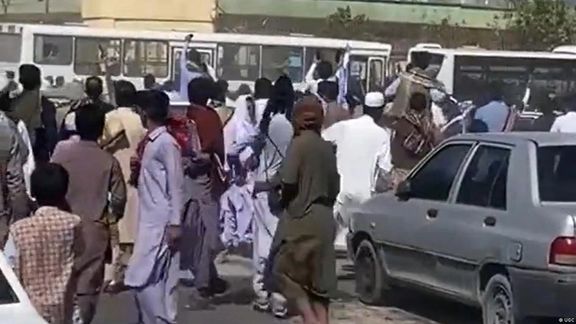
Many Iranians have taken to social media in the past few days to refute allegations of sectarianism levelled at some protesters by officials and hardline media.
Pro-government officials and media have increasingly been accusing protesters of “terrorism” and “fomenting sectarianism” following their harsh crackdown on demonstrators in the Baluch city of Zahedan in the southeastern province of Sistan and Baluchestan September 30, which left nearly a hundred dead, including children and bystanders, and the ongoing crackdown in Sanandaj in the western Kordestan (Kurdistan) province.
Protests will result in Iran's partition if the government does not crack down, they warn. They also blame “foreign enemies” and “terrorist groups” for the unrest that began 24 days ago when Mahsa Amini, a young woman was killed in police custody, and has spread since then.
Antigovernment activists say that the harsh crackdown on ethnic groups is the government’s tactic to foment more tensions and appear as the savior of Iran’s territorial integrity and public security.
The Revolutionary Guards (IRGC)-linked Tasnim news agency wrote Saturday that because “foreigners failed” to use the ethnic card in the protests they resorted to other disruptive tactics.
Tasnim was referring to a hactivist group’s disruption of a state TV’s news program which suddenly transitioned from a clip showing Supreme Leader Ali Khamenei to chants of “women, life, and freedom”, the signature slogan of the current protests, or revolution, as many describe it now.
The IRGC which had initially not used overwhelming military force against protesters on the streets, has been attacking the positions of Kurdish Iranian insurgent groups in Iraqi Kurdistan with artillery and drones in the past three weeks.
Sectarian groups have been active in both provinces for decades but there is no indication, judging from the slogans protesters chant in both places that they are fighting for any cause other than toppling the clerical regime.
“Down with the Dictator” and “Death to Khamenei” are at the top of the protesters’ list of slogans in Zahedan, capital of Sistan and Baluchestan, and Sanandaj, capital of Kordestan, as in all other areas of the country.
“The people of Kordestan donated blood for the people of Zahedan and chant ‘Kordestan supports Zahedan’. Accuse them of separatism if you dare!”, a supporter of protesters tweeted.
“You had ‘separated’ us for 43 years: men from women, the younger from the older generation, the Kurds from the Turks, The Luris from the Baluchis, the Persian speakers from the Gilaki speakers, … We have just united to separate the Islamic Republic and its clerics from our Iran,” another tweet which has become very popular said.
Others have pointed out in their social media posts that officials consistently refer to peacefully protesting university students as “rioters’, celebrities who have supported protesters as “lackeys of the West”, ethnic groups as “separatist” and claim that the youth who have turned into the driving force of the protests as kids who are only acting up.
“You are resorting to everything you can to instigate sectarianism in some part of the country [but you keep failing]. You tried Baluchestan but you failed, now you are targeting Sanandaj. No part of the Iranian territory has been or will be separated from it. Whenever it happened [in the past] it was because of the incompetence of the rulers at the time. You’ve lost your power of tricking people,” US-based Iranian journalist Ehsan Karami tweeted.

President Volodymyr Zelensky said Monday Russia had used Iran-made drones responding to Saturday’s attack on the Kerch bridge linking Crimea with the mainland.
After explosions in several Ukrainian cities Monday morning, ending months of calm in Kyiv and reportedly killing at least eight in the capital, Zelensky gave a video address on social media. “This morning is difficult,” he said. “We are dealing with terrorists. Dozens of missiles and Iranian Shaheds. They have two targets: energy facilities throughout the country…[and] people. There may be temporary power outages now, but there will never be an interruption in our confidence – our confidence in victory.”
Russian President Vladimir Putin said Sunday the truck-bombing of the Kerch bridge, Europe’s longest and linking Russian-held Crimea to the mainland, was “a terrorist act” organized by Ukrainian intelligence agents and “aimed at destroying critical Russian civilian infrastructure.”
Zelensky’s claims over Iranian drones were the latest from Ukrainian leaders. Last week Oleksiy Kuleba, head of the Kyiv military administration, said six explosions 75km south of Kyiv in a military base at Bila Tserkva were caused by Iranian-made Shahed-136 delta-wing ‘kamikaze’ drones.
‘Cheap alternative’
Ukrainian officials had earlier suggested the drones offer Moscow an easily-assembled, cheap alternative to high-precision missiles or piloted air raids, although Nataliya Gumenyuk, a spokeswoman for the Ukrainian military command, recently told AFP news agency the Shahed-136’s effectiveness was “very low”. In the Bila Tserkva attack, six drones were shot down, while another six crashed into buildings, injuring one soldier.
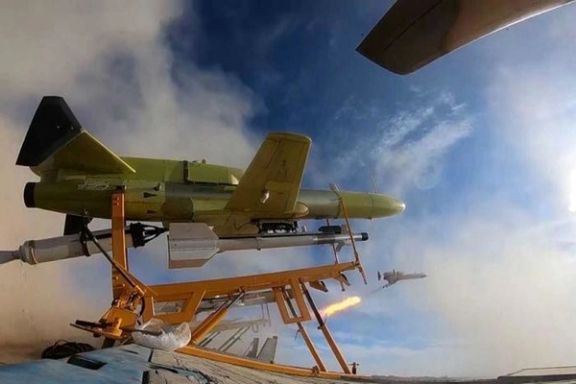
Tehran has denied supplying drones to Russia. Iran foreign ministry spokesman Nasser Kanaani last week said media reports were “baseless.” US National Security Advisor Jake Sullivan claimed July Iran had agreed to supply drones to Russia, a warning repeated by officials several times. In September, the US imposed sanctions on several companies for helping or facilitating the drone transfers to Russia.
Ukraine is also lobbying for increased supplies of US weapons. Politico reported Monday that discussions on air-defense batteries would “loom large at the US-led Ukraine Defense Contact Group… in Brussels later this week.” Ukraine’s Defense Minister Oleksii Reznikov said “the best response to Russian missile terror is the supply of anti-aircraft and anti-missile systems to Ukraine” so as to “protect the future of Europe.”
Ukraine seeks Israeli arms as rhetoric escalates
Ukraine is also keen to source arms from Israel, a top-ten global weapons exporter and the Middle East’s main drone producer alongside Turkey. While Ankara has supplied Ukraine since 2019 with the advanced Bayraktar TB-2drone, Israel has been reluctant to arm Ukraine due to its generally good relations with Russia, a situation Zelensky claimed in September had left him “in shock.” With parliamentary elections due November 8, Israeli politicians are also wary of alienating the Russian-speakers m around 15 percent of voters.
In a further sign of possible escalation in the ten-month Russia-Ukraine conflict, Belarusian President Alexander Lukashenko said Monday he had ordered troop deployment alongside Russian forces near Ukraine in response to what he said were planned Ukrainian “strikes” on the territory of Belarus. The Ukrainian military claimed Saturday Russia had deployed Iranian drones in Belarus.
“Tell the president of Ukraine and the other lunatics: if they touch one meter of our territory then the Crimean Bridge will seem to them like a walk in the park,” Lukashenko said.
Justifying Russia’s actions in a televised address, Putin said Russia would respond again if Ukraine hit Russian territory. “The Kyiv regime, with its actions, has put itself on the same level as international terrorist organizations… To leave such acts without a response is simply impossible.”
Russia has also threatened the use of tactical nuclear weapons in Ukraine. Zelensky October 6 called for “preemptive strikes” by Nato so that Russia knew “what will happen to them if they use it,” leading to Russian charges that the Ukrainian president wanted to turn the conflict nuclear.
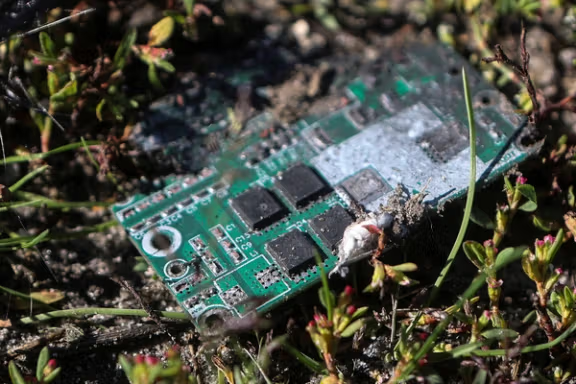
The Ukrainian military claimed Saturday that Russia has sent Iranian military drones to Belarus for possible attacks in western or central parts of Ukraine.
According to Kyiv Independent, Ukraine’s Territorial Defense Forces “West” reported that at least 20 Iranian Shahed-136 loitering drones were delivered to the Luninets airfield in Belarus, located around 50 kilometers from Ukraine.
Russia has stepped up attacks by Iranian drones to the interior regions of Ukraine in the past week. Shahed-136 drones are ‘suicide’ unmanned aerial vehicles that are relatively hard to spot and shoot down, although Ukrainian forces have had some success in targeting them in the air.
Some Ukrainian bloggers covering the war expressed concern that the Iranian drones can be used to target Western arms supplies to Ukraine that use land corridors in the west of the country to bring in weapons and supplies.
Iran, a close ally of Russia is under US sanctions for its nuclear program and talks since April 2021 to resolve the issue have failed.
The United States warned in July that Russia was planning to obtain Iranian drones, with its own UAV force not fully capable of performing its war missions.
Several Iranian drones launched from Russian-held territory in Ukraine’s south attacked targets 75km south of Kyev this week. Although some were shot down, the Ukrainian military reported six explosions at a military base in Bila Tserkva.
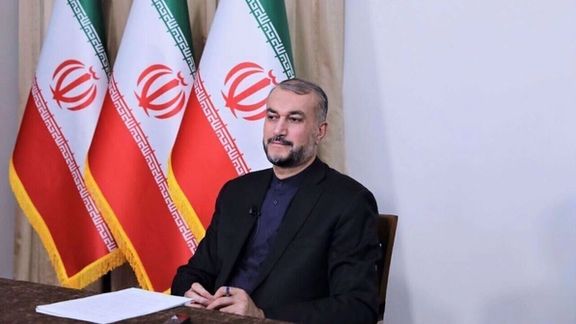
While evidence of Russia’s using Iranian drones against Ukraine is piling up, the Islamic Republic’s foreign ministry once again denied providing drones to Moscow.
Foreign Minister Hossein Amir-Abdollahian made the claims during a phone conversation with his Finnish counterpart Pekka Haavisto late on Thursday.
He said certain states dispatch arms and ammunition to Ukraine, but the Islamic Republic did not send any weapon to Russia to be used in the invasion of Ukraine, because Tehran believes that the only way to resolve the issue is through diplomatic channels, and that any sort of military aid will delay the opportunity to reach peace.
Iran’s foreign ministry spokesman Nasser Kanaani had said October 3 that media reports were “baseless” and that Tehran was committed to “active neutrality and opposition to war and the need for a political settlement of the differences between the two sides and away from violence.”
Oleksiy Kuleba, the head of the Kyiv military administration, said Thursday that six explosions 75km south of the city early Wednesday, wounding one in a military base at Bila Tserkva, had been carried out by Iranian-made Shahed 136 delta-wing ‘kamikaze’ drones.
Moreover, Ukrainian President Volodymyr Zelensky said in his address to the participants of the European Political Community summit in Prague on Thursday, “Today, Russia launched another airstrike on Ukrainian cities. It used Iranian drones again. By the way, they are used every day, and so far Iran says every day that there are allegedly no such drones here.”